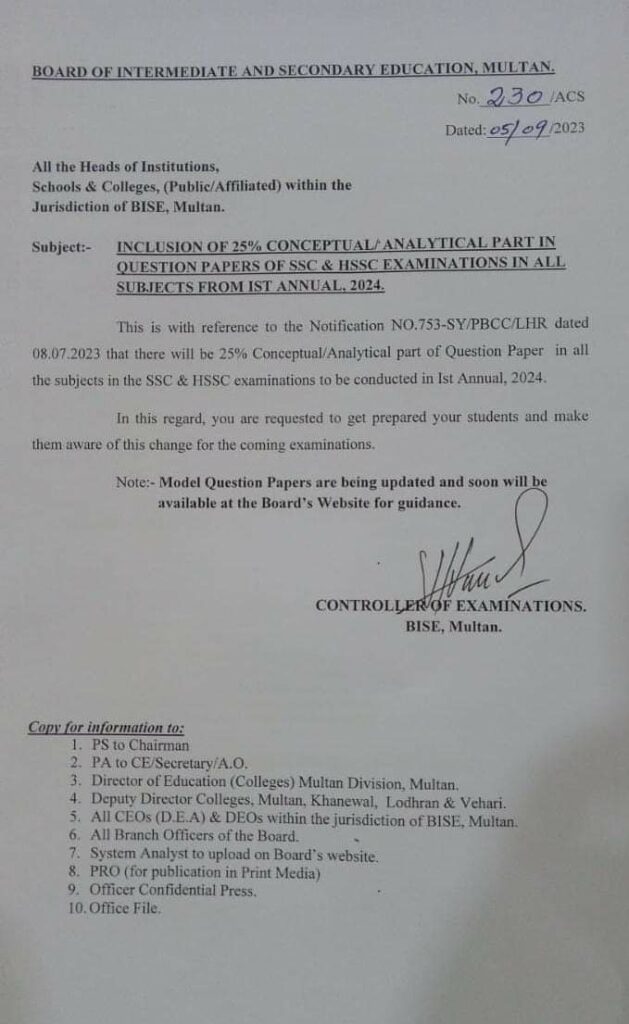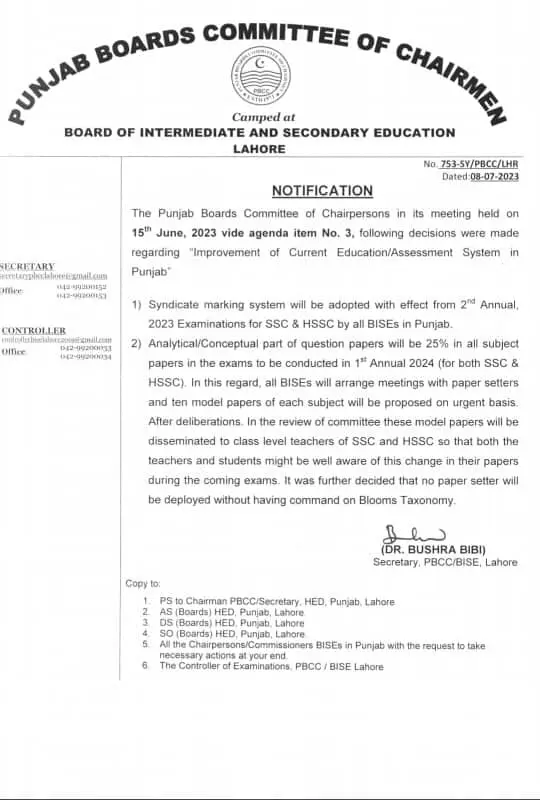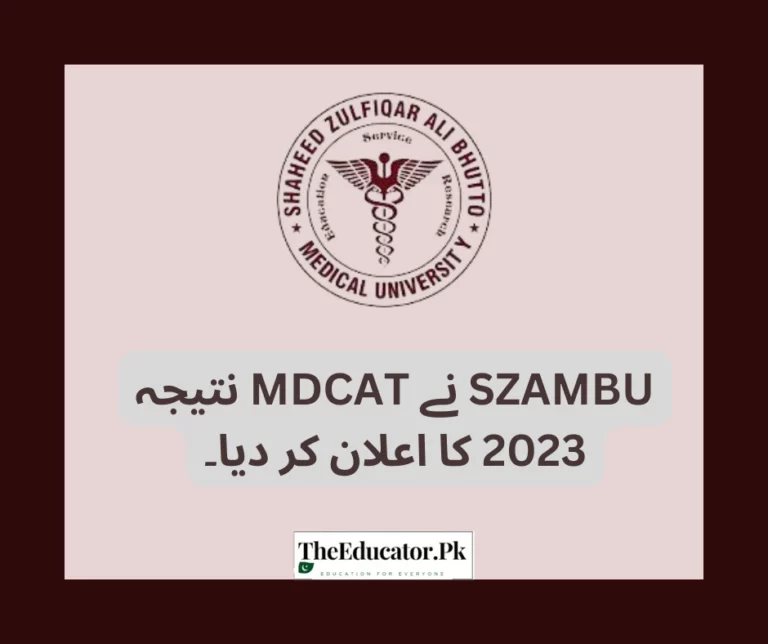PBCC: Paper pattern for Matric and Intermediate exams changed
The Punjab Boards Committee of Chairmen (PBCC) recently announced a modification to the matric and intermediate paper pattern. In this blog, we will discuss the specifics of this shift. This blog will reveal a new strategy to improve students’ analytical and conceptual skills.

Related: AIOU Result 2023 FA Matric, BA & MA- By Roll Number & Name
We will also discuss the ramifications, advantages, and overall impact of this reform on Punjab’s education system. We will discuss everything from introducing the syndicate marking system to incorporating higher-order thinking problems.
Read: Matric Result 2023
So, let’s get down to business and see how PBCC will revolutionize the whole thing.
PBCC’s Decision for Improvement in the examination system
The PBCC meeting on June 15th, 2023, was a watershed moment in Punjab’s educational scene. Under agenda item No. 3, the committee critically judged the province’s education and evaluation system.
The PBCC has unanimously opted to use the syndicate marking method for the 2nd Annual 2023 Examinations. This modification is intended to unify the evaluation procedure and guarantee equality and precision in marking across all Punjab Boards.
Check: Ministry of Education: New syllabus for Matric and Intermediate
The Integration of Analytical and Conceptual Questions
The PBCC has required that 25% of the questions should be conceptual.
This move toward higher-order thinking abilities will allow students to successfully apply their knowledge, evaluate information, and solve issues.

To ensure the proper implementation of the new paper pattern, all Punjab Boards would meet with paper setters. Ten model articles for each subject will be proposed promptly during these conversations.
Following careful consideration, these example papers will serve as examples to aid students and teachers. How? It will help them in understanding and adjusting to the changed question structure.
Empowering Teachers and Students
PBCC has urged to distribute the knowledge among the teachers and students. This will eventually help them understand the system faster.
The boards will send practice papers to all teachers. This will allow them to prepare students for the upcoming exams adequately.
This proactive strategy will guarantee that instructors and students are adequately prepared for the changes in question papers, resulting in a seamless transition and enhanced performance.
Command of Bloom’s Taxonomy and Enhanced Assessment
The PBCC has made it obligatory for paper setters to have a good grasp of Bloom’s Taxonomy to ensure the integrity and quality of the examinations.
This widely accepted educational taxonomy divides learning objectives into cognitive categories. By adhering to this guideline, the PBCC hopes to guarantee that assessment corresponds to higher-order thinking abilities and encourages students to exhibit a thorough mastery of the disciplines.
Parting thoughts
The decision of the Punjab Boards Committee of Chairmen to change the paper pattern for matric and intermediate examinations is an essential step toward improving Punjab’s education and evaluation system.
The new paper pattern will force students to think critically. This paradigm change will educate students about real-world difficulties and develop a critical thinking and problem-solving culture.
The PBCC has made substantial steps to establish a fair and consistent evaluation procedure by disseminating example papers and implementing the syndicate grading system.
The updated paper design and instructor support will enable students to achieve in their exams and provide them with the skills required for future success.
As Punjab welcomes this radical reform, it ushers in a new era in the educational landscape of the province.

![Karachi board Matric Result 2023 [Date Announced]](https://theeducator.pk/wp-content/uploads/2023/09/Karachi-board-Matric-Result-2023-Date-Announced-768x644.webp)


